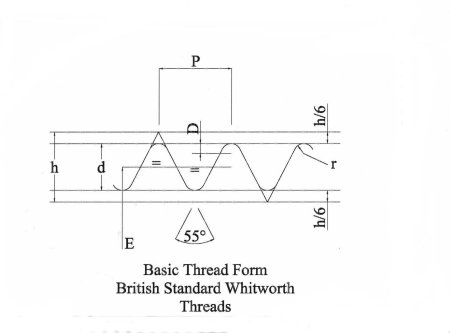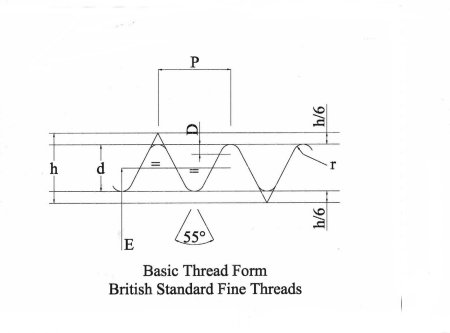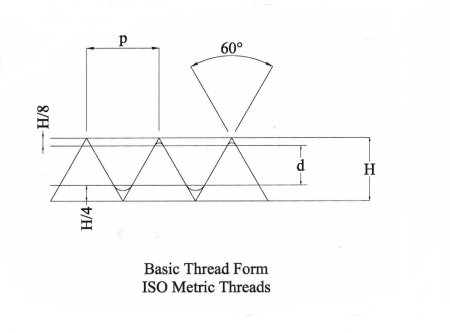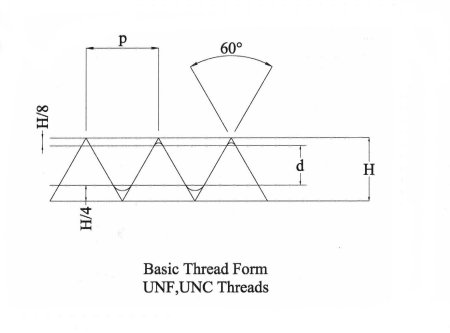Astronomy Mechanicals
This page is all about those add-on essentials to the hobby - the
extra eyepieces, the filters, the focusing widgets , the whole thing.
So far I have found it essential to have made or make myself:
- GP-DX mounting fitting to mount my Vixen GP-DX equatorial head to any pillar.
- Camera mount to screw into the end of the counterweight arm.
- Hartmann mask for Vixen VC200L - open out & cap the existing blanks on the cover.
- Filter mount for objective ERF on a 4" refractor to filter Solar H-α filter.
- Casing for a CCD camera & OM-fit to M42 x 1.0 adapter
Which isn't cheap if they're being made for you.
So I bought a Myford lathe off Ebay, having had experience with a large Colchester lathe at University.
As part of the ongoing process I'm making the designs I do draw up available here. Pictures of the completed object will be avaialble for those I complete.
| Drawing |
Description |
Finished ? |
Vixen EQ adapter to mount SP declination head |
This interface allows me to mount the declination head from my vixen SP onto a Vixen EQ mount I bought as an
portable astrophotography mount. The EQ is much stiffer and easier to adjust than the SP but the astrophotography mount is lacking
a declination head. So I designed this interface plate to marry the two together. Its complement allows the fixed head from
the EQ to mount onto the SP RA head - restoring the portable astrophotography mount. |
|
OM1 interface adapter |
This adapter mounts the OM bayonet fitting at on end to allow full use of auto iris control and marries it with an O-ring to a vacuum window at the other. |
|
Vacuum CCD Window housing |
This adapter mounts a vacuum window to the adapted RS Al machined box. The vacuum window used is a φ40mm from Edmunds. |
|
Vixen Pillar mount adapter plates |
This drawing includes a diagram of the Vixen tripod adapter interface and uses two plates to fit it to the top of the pillar. OL
One plate fastens to the top of the pillar, the fits snugly under the Vixen tripod head and includes azimuth adjustment bearing pillars. |
In use on my Vixen GP-DX in the observatory |

|
This adapter connects the Skywatcher 80ED focuser drawtube male M58x0.75 drawtube
to a Vixen M60 x0.75 thread fitting to allow use of The Vixen Direct-wide camera adapter on the skywatcher.
In this case principally a good 2" eyepiece adapter. |
In use on my Vixen GP-DX in the observatory |
|

|
This picture shows the manufacture of the replacement observatory shutter prior to laying up with fibreglass |
In use on my observatory - its way too heavy and needs rapid replcament with a pure-fibre layed up shutter.
|

|
This picture shows the mounting plate manufactured from 300x400x10mm Aluminium sheet for mounting
a pair of scopes side-by side on the GP_DX dovetail mounting. The dovetail can be seen on the near side. |
In use on my observatory - This too is too heavy and has been replaced with a Vixen Large accessory Plate
which seems to carry the weight ( about 11Kgs ) well. |

|
This picture shows the adapter for the skywatcher 80ED focuser rack handle to connect a robofocus to it.
The problem was that the robofocus adapter that mates the motor to the shaft interferes with the side of the
rack mount when mounting the motor off the rackmount cover screws. The shaft unscrews into multiple pieces so I turned an
adapter that replaces one of the shafts extension from the rack gear and mounts directly in to the connector without fouling.
|
In use on my observatory - I have a robofocus on the VC200 and one on the 80ED. |

|
This picture shows the mounting plate drilled and bent to mount the robofocus on the VC200L.
This too uses the plates provided and mounts them off the screws used for the rack covers on the rack and pinion
focuser. |
In use on my observatory - works well with a small amount of flex that the anti-backlash compensation in software handles fine. |

|
This picture shows the adapter I turned to mount a T-adapter on the 80ED focuser thread with the aim of internally mounting the Rini 2" focal reducer
using its T-thread to get as close to the film focal plane as possible. |
Assembled with camera adapter and Rini focal reducer. Unfortunately there is still not enough back focus available to reach focus
with this combination due to the remaining distance from the focal plane. I've removed as much thickness as I can from the overall construction to try to get there.
The next step is to remove the flange surface from the FR to get an exrta 5mm or so inside the adapter.
|
| |
|
|
Turning or Tapping Astronomical Threads
The method of calculating meshing thread sizes - from Maryland Metrics
HOW TO CALCULATE THE APPROXIMATE NOMINAL MAJOR DIAMETER (O.D.) OF THE METRIC MALE (EXTERNAL) THREAD WHEN ONLY THE FEMALE (INTERNAL) METRIC THREAD IS AVAILABLE FOR MEASUREMENT.
- MEASURE VERY CAREFULLY THE PITCH (P) USING A THREAD PITCH GAGE, OR ANY OTHER TYPE OF MEASURING TOOL WHICH WILL GIVE AN ACCURATE READING FOR PITCH.
- MULTIPLY THE FACTOR VALUE: (F)=1.0825 BY THE PITCH (P) WHICH YIELDS RESULT (R). F x P = R.
Example: 1.0825 (F) X 1.75 (P) = 1.8944 (R)
- MEASURE VERY CAREFULLY THE (I.D.) INSIDE DIAMETER (MINOR DIAMETER) OF THE FEMALE METRIC THREAD USING AN INTERNAL MICROMETER, INTERNAL CALIPER, OR GAGE PIN.
- ADD THE MEASURED VALUE FOR THE INSIDE DIAMETER (I.D.) TO THE RESULT (R) WHICH WILL YIELD THE NOMINAL MAJOR DIAMETER (O.D.) OF THE FEMALE THREAD. I.D. + R = O.D.
Example: ASSUME MEASURED VALUE 10.1036 (I.D.) + 1.8944 (R) = 12 (O.D. OR APPROXIMATE NOMINAL MAJOR DIAMETER).
Finally - the only thread size table I could find on the web. I need more like these to make the
strange M60, M56 and M43 sizes required by Vixen and Skywatcher. The source of this set of spreadsheets can be found
at Colin Usher's Model engineering website here along with some very useful calculators of other dimensions.
Thread Data & Formulae
All threads in an Excel spreadsheet
BSW (British Standard
Whitworth)

P = Pitch = 1/Number of threads per inch (tpi)
h = Angular Depth = 0.960491 x P
D = Depth of Rounding = 0.073917 x P
h/6 = Shortening = 0.160083 x P
d = Actual Depth = 0.640327 x P
r = Radius at the Crest & Root = 0.137329 x P
C = Core diameter = Major Diameter - 1.280654 x P
Effective or Pitch Diameter = Major Diameter - .640327 x P
BSF (British Standard
Fine)

P = Pitch = 1/Number of threads per inch (tpi)
h = Angular Depth = 0.960491 x P
D = Depth of Rounding = 0.073917 x P
h/6 = Shortening = 0.160083 x P
d = Actual Depth = 0.640327 x P
r = Radius at the Crest & Root = 0.137329 x P
C = Core diameter = Major Diameter - 1.280654 x P
Effective or Pitch Diameter = Major Diameter - .640327 x P
ME (Model Engineer)

P = Pitch = 1/Number of threads per inch (tpi)
h = Angular Depth = 0.960491 x P
D = Depth of Rounding = 0.073917 x P
h/6 = Shortening = 0.160083 x P
d = Actual Depth = 0.640327 x P
r = Radius at the Crest & Root = 0.137329 x P
C = Core diameter = Major Diameter - 1.280654 x P
Effective or Pitch Diameter = Major Diameter - .640327 x P
BA (British
Association)

P = Pitch = 1/Number of threads per inch (tpi)
h = Triangular height = 1.1363365 x P
d = Actual Depth = 0.60000 x P
t = Shortening = 0.2681688 x P
r = Radius at the Crest & Root = 0.1808346 x P
Effective or Pitch Diameter = Major Diameter - 0.6000 x P (d)
C = Core diameter = Major Diameter - 1.2000 x P (2d)
Nuts and Bolts across flats is nominally 1.75 x Major Diameter
For Model Engineering purposes nuts and bolts are obtainable
with the hexagon heads one size less across flats, this gives a better scale
effect.
ISO Metric
Fine
ISO Metric
Coarse

P = Pitch = 1/Number of threads per inch (tpi)
H = Angular Depth = 0.866025 x P
H/8 = Shortening of major dia = 0.108253 x P
H/4 = Shortening of minor dia = 0.216506 x P
d = Actual Depth = 0.541266 x P
r = Radius at the Root = 0.1443 x P
Hn = Basic height of Internal Thread = 0.54127 x P
Hs = Basic height of External Thread = 0.61344 x P
Note: The form of the Metric Series of Threads varies between Internal &
External Threads, in particular the root and crest details. This allows for flat
(truncated) or radiused forms. Engineers requiring more specific information
should refer to the relevant ISO Standards. This data base is far to small to
fully cover this subject.
Unified National Fine
(UNF)
Unified National
Coarse (UNC) s

P = Pitch = 1/Number of threads per inch (tpi)
H = Angular Depth = 0.866025 x P
H/8 = Shortening of major dia = 0.108253 x P
H/4 = Shortening of minor dia = 0.216506 x P
d = Actual Depth = 0.541266 x P
r = Radius at the Root = 0.1443 x P
Hn = Basic height of Internal Thread = 0.54127 x P
Hs = Basic height of External Thread = 0.61344 x P

|
















